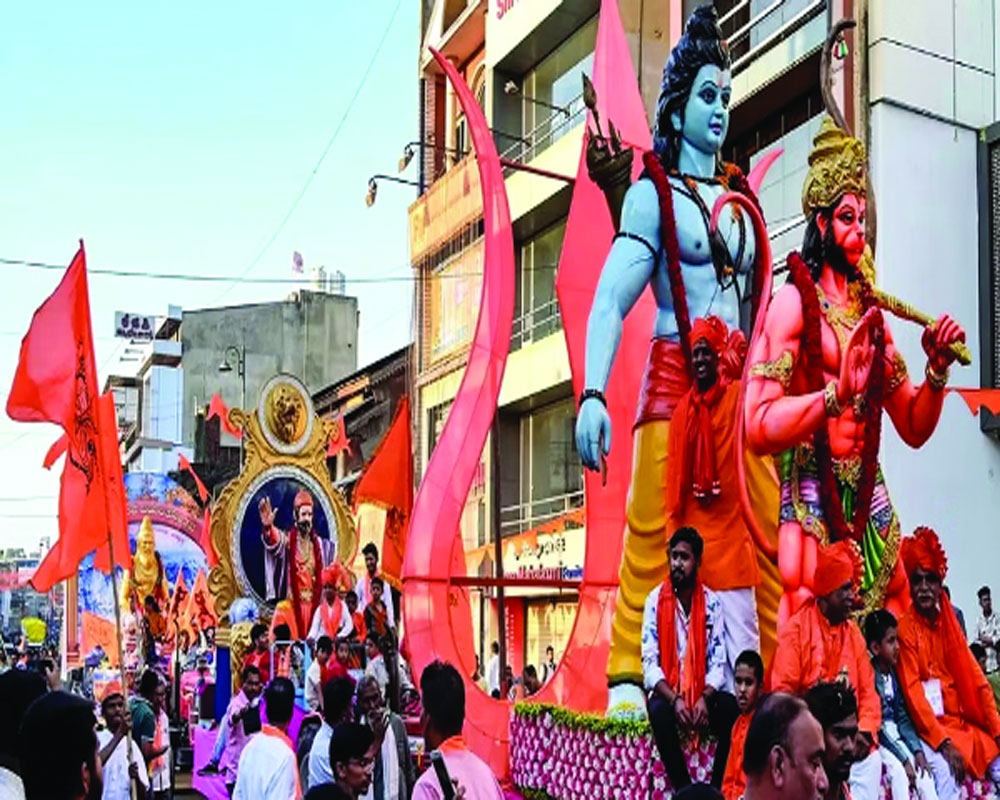It is better to spiritualise politics rather than politicise religion, which has its side effects and can go against the very spirit of nation building
Esha Dharma Sanatan meaning “this is sanatan dharma” or “this is eternal righteousness” defines the righteous actions in Vedic, Pauranic and other ancient Sanskrit texts including Manusmriti. I am translating Dharma as righteousness and not religion because the word ‘Dharma’ has a far wider connotation than religion. The right action in all walks of life has been referred to as Dharma in Indian culture. Be it Raj Dharm (to do and not to do by a Ruler), Praja Dharma (to do and not to do by subjects), Putra Dharma (to do and not to do by a son), Shishya Dharm (to do and not to do by a pupil) and so on. Sanatan Dharm, which we commonly refer to as Hinduism, sets out principles of eternal righteousness in all walks of life, which are absolute and objective.
That is the reason why Sanatan Dharm, in the words of Sri Aurobindo, gave itself no name, because it set itself no sectarian limits; it claimed no universal adhesion, asserted no sole infallible dogma, set up no single path or gate of salvation; it was less a creed or cult than a continuously enlarging tradition of the Godward endeavour of the human spirit. An immense many-sided and many staged provisions for spiritual self-building and self-finding.
Sanatan Dharm or Hinduism is distinct in its character from all other religions of the World as it has no creed, cult, or code. This very nature of Sanatan Dharm makes it indomitable and eternal, as there are no defined characteristics or boundaries of it. The extinction or the destruction of Sanatan Dharm would mean the extinction of righteousness and the destruction of Godward endeavour. The recent uproar after Udaynidhi’s statement followed by the panic alerts about the destruction of Sanatan Dharm was more political than religious. Godward Endeavor and righteousness cannot even slightly be impaired much less destroyed by any outside force.
Sanatan Dharm does not set out any path in the exclusivity of others for Godward endeavour. Even an atheist is a Hindu or a Sanatani, who does not believe in the existence of God but follows the path of Dharm. Maharishi Charvak had been revered as a saint and the propagator of the materialistic system and atheistic school of Hinduism by the Sanatan Dharm. Its unique inclusiveness includes all the seekers of Truth within its ambit, irrespective of the religious practices he or she follows and all the activities of human life, individual and collective. Similarly, Raj Dharma is a functionary branch of Sanatan Dharm, defining the dharma of the Ruler, which in modern times should be the charm of the government.
Dharm’s real business is to prepare man for spiritual consciousness. The religious institutions which include the place of worship, scriptures, guru and guides, and essential practices are aids to practice dharma and to thus attain spiritual consciousness. These religious institutions comprising temples and their architecture, mantric sounds, rituals, practices and even exercises i.e., Pranayam and Yoga have been carefully developed with the high scientific acumen of Rishis. It is not the external attack, which has put Sanatan Dharm at risk. It is rather the politicisation of the religious sentiment of people through self-proclaimed flag bearers of Hindutva who are not interested in the scriptures and philosophy of Sanatan Dharm but in exploiting the politicised religious sentiment to achieve political ends, which is posing a real threat to the Sanatan Dharm.
They are creating a cult among Hindus that is philosophically opposed to Hinduism and are propagating the characteristics rather than vices as virtues, which Sanatan Dharma and Hinduism seek to conquer. Such pseudo-religious leaders, who are politicians, had been trying to confine
Sanatan Dharm to their Hindutva identity with narrowness and shallowness in understanding and the practice of Dharma. The lack of intellectual activity among the majority has kept most of the Indian population away from the study of dharma. What has done further harm to the Sanatan is the incorrect and humanised audio-visual depiction of scriptures and Puranic texts. The rise of religious gurus through meticulously crafted PR strategies and social media marketing is the real threat to Sanatan Dharm. Individually, one qualification for a Hindu or a Sanatani is the seeker ship of higher consciousness through his path. That path can even be atheistic or materialistic, as propounded by Maharishi Charvak. Raj-Dharma calls for the rule by Dharm i.e., righteousness and not otherwise. The present philosophy of “Rule of Law” keeps much pace with it. Indian Religion always adhered to the rule of Dharma therefore the King or the Ruler was guided by a Rishi, who was spiritually evolved and illuminated with true dharma. The right remedy, according to Sri Aurobindo, is not to belittle still farther the age-long ideal of India, but to return to its old amplitude and give it a still wider scope.
Gopal Krishna Gokhale strongly advocated for the spiritualisation of politics. His concept of spiritualisation of politics was to reorient politics away from power dynamics and towards higher principles of governance i.e., justice, compassion, and peace. If we want to protect Sanatan Dharm, we need first to come out from the pseudo-Hinduism driven by politics and follow the real path of Sanatan Dharma, by depoliticising Sanatan Dharma and spiritualising the politics.
(The writer is an advocate in the Supreme Court of India, views are personal)


























